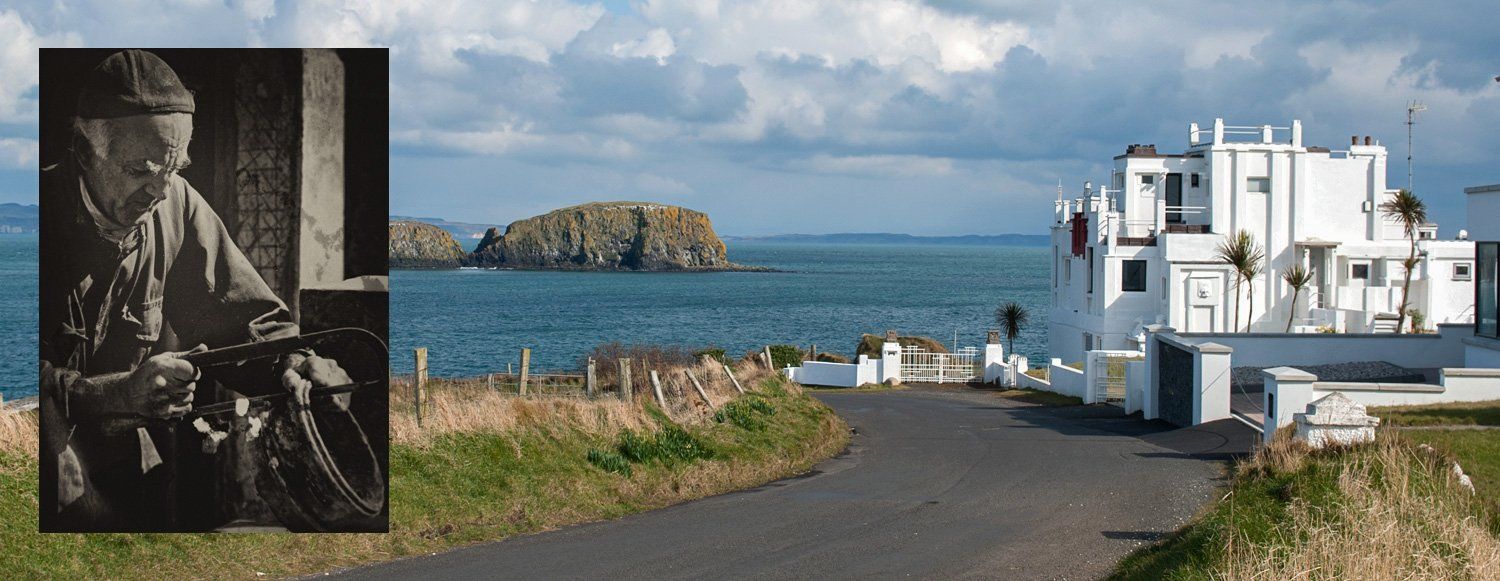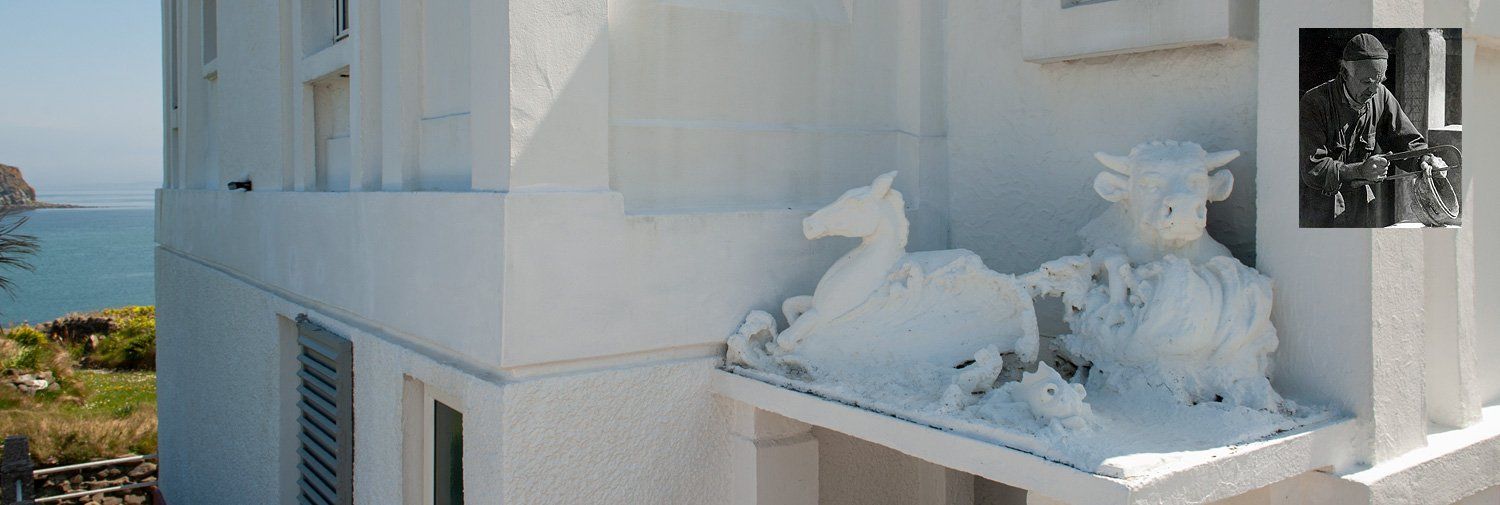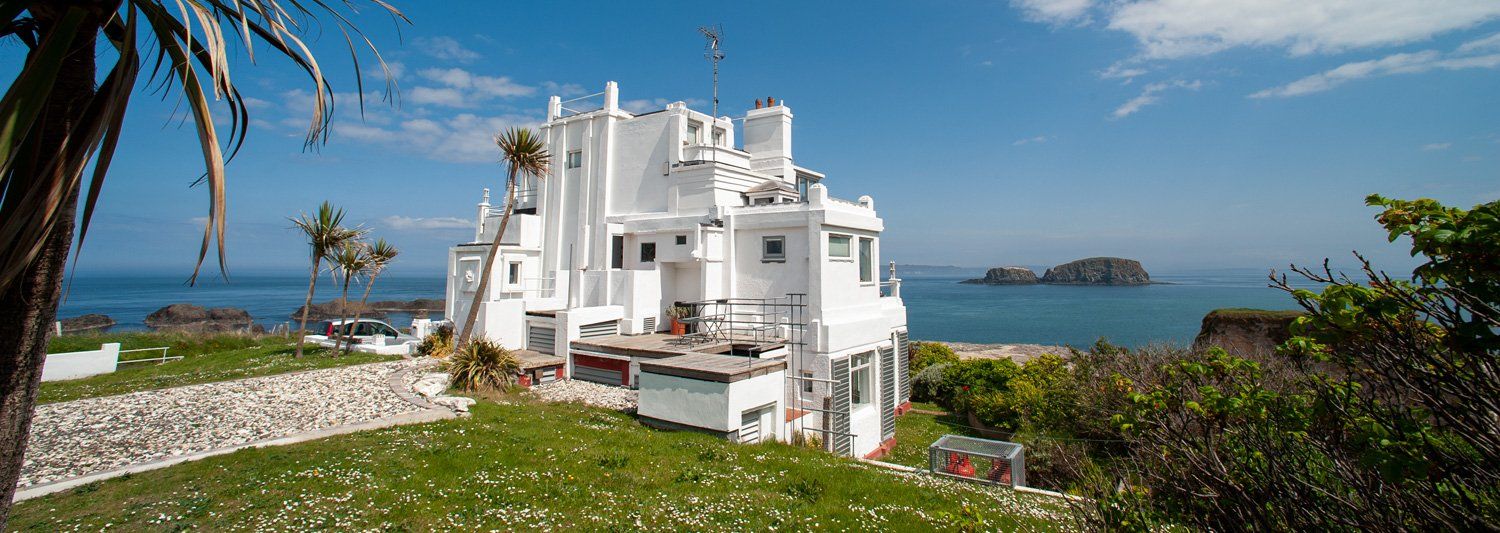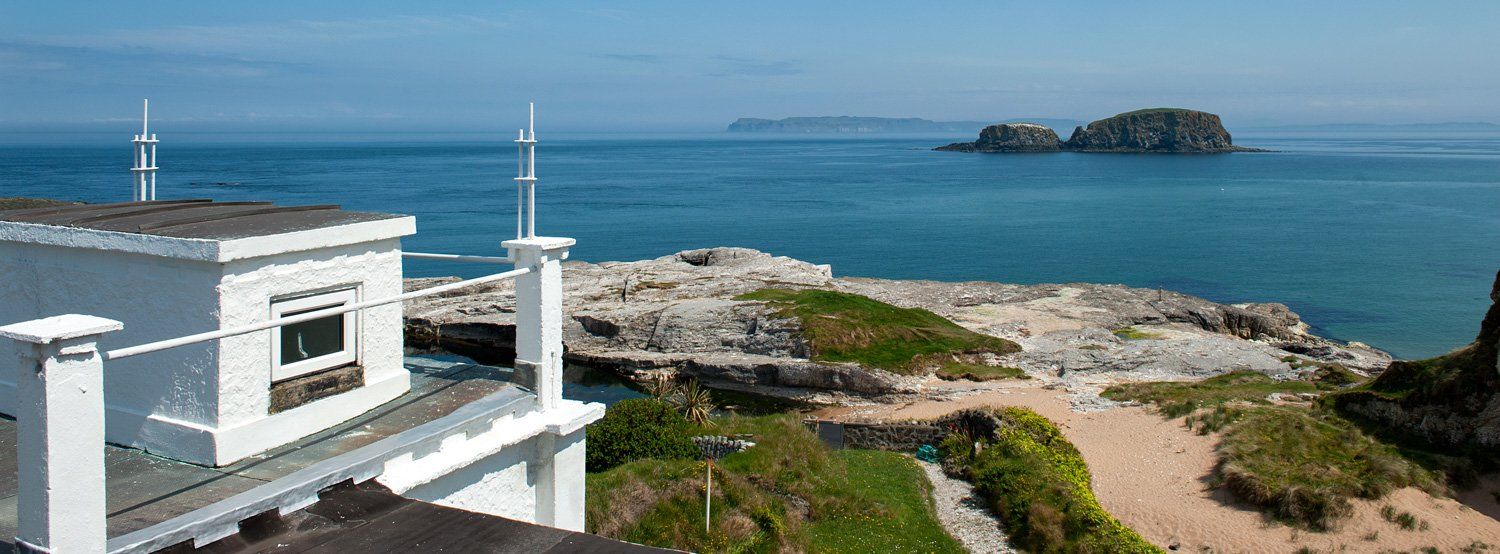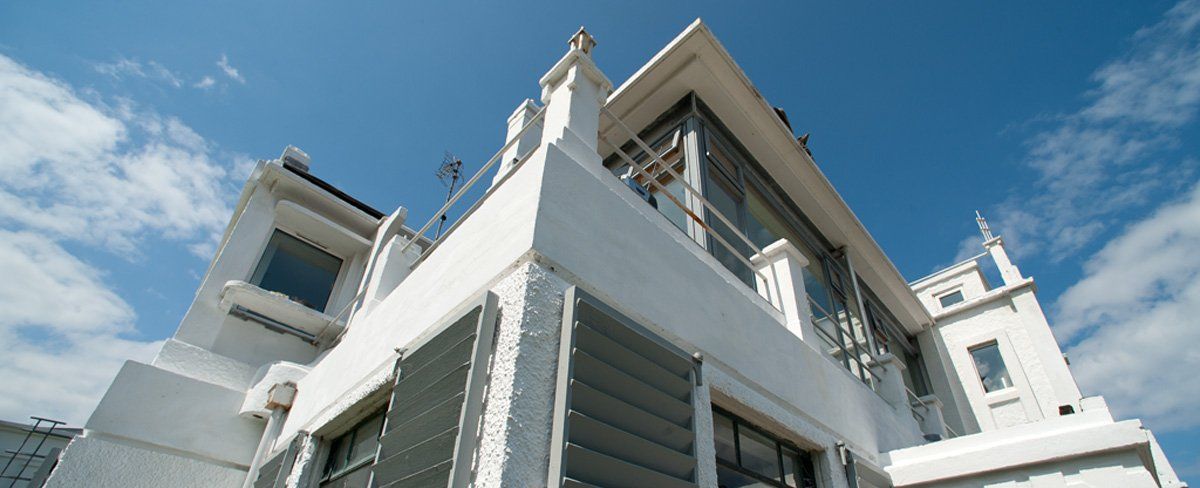'Bendhu’ is the last house on the right, overlooking the sandy port on the winding road down to Ballintoy Harbour. This eccentric, original and intriguing house was the creation of Newton Penprase who originally came for Cornwall, he came to Northern Ireland as a young man and taught at the Belfast College of Art. The house was named after the nearby headland that looks over Boheeshane Bay to the limestone headland of Larry Bane. Newton started Bendhu in 1936 and continued working at it long after his retirement in 1953, it was known locally as 'the house that was never finished' and lots of local stories abounded about why, just when it looked like it had reached its conclusion Newton would find another view or creative idea for his home.
The house is timeless, a wonderful construction, built entirely by hand from buckets of cement and an artist's hand. Unfortunately, an accident forced him to refrain from building in his latter years and ‘Bendhu’ lay untouched for many years. It was sold shortly after his death in 1978 to Richard McCullough and later in 1993 passed to the present owners who have restored the house and continue to live with, and refine 'Bendhu' in a tradition that I am sure Newton would have approved of. As a teenager I was fascinated by' Bendhu', it caught my imagination and inspired me every time I passed by, it intrigued me like a castle or a sculpture, the contrast between it and all the other houses, the freedom in which it was being built without a final shape on paper.
Later in life, when I started work I had the opportunity of visiting ' Bendhu' several times while delivering bottled gas from my uncle's store in Ballycastle and on occasions Newton would give us a guided tour of new additions. Newton built rooms around views and let his imagination and expression run free. Sunken rooms, port holes, rectangles, triangles, ovals, cubes, wood paneling, wall paintings, ship cabins, sculptures of animals, walkways and parapets, railings, cliff stairs and secluded corners are all combined in this wonderful expression of one man’s creativity and imagination. It is ironic that during the building of ‘Bendhu’ Newton received numerous letters and threats from the building authorities.
Ironically, the same authorities that shortly after his death, proclaimed 'Bendhu' as 'Architectural Heritage' and it became listed. But for those who saw the first shapes grace the skyline of Ballintoy harbour or those, like me, who grew up with it, the uniqueness, creativity and originality of the building had already silently told us it was something special and unique. The concept of a house that has no ultimate destination, that grows as a result of one person's creativity is not one easily understood by the rigidity of building control. I have no doubt that the same problem would arise today if another Newton Penprase began to build another 'unique' structure which did not fit into the square box of our building guidelines.
Within the same guidelines, monstrosities are built that deface our natural landscape, created on drawing boards with no affinity to locations and owing their existence more to the circles moved in than a justified purpose. It is wonderful to see how 'Bendhu' blends and enhances its environment in a way we can relate to. The last time I saw Newton was as I drove along Ballycastle seafront, he had retired from Bendhu to a residential home and was sitting on a bench looking out to sea, shortly afterwards he passed on. His legacy reminds us that art is not only to be viewed, it can be practical too, like 'Bendhu'. Please note: 'Bendhu' is a private home and not open to the public, please respect that if you view it. Photograph of Newton is by kind permission of his grandson David.

